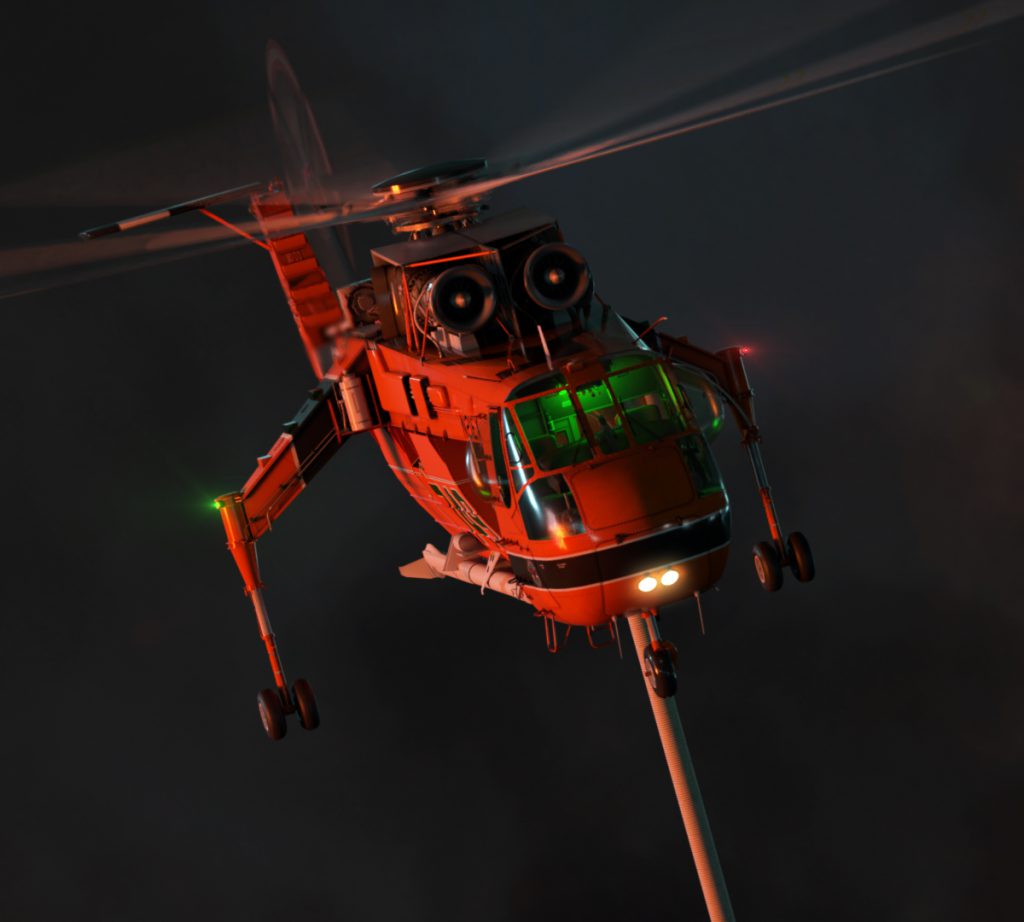Key takeaways from experts on the future of heavy lift and aerial firefighting
By: Jennifer Ferrero, APR, DTM

Some of Erickson Incorporated’s brightest and best leaders got together for an hour-long webinar about “The Future of Heavy Lift,” on January 26, 2021. Experts shared emerging information about the changing marketplace of aerial firefighting.
There were themes throughout the session, but the reason for key challenges focused on longer firefighting seasons and higher risk, along with shortages of people and parts.
Three key areas of discussion were:
- How to prepare, plan and respond to longer fire seasons
- Adjusting strategy for changing environments
- The role of new technology to enable and enhance future missions
How to prepare, plan and respond to longer fire seasons
All five panelists reflected upon weather patterns and outdoor management, which have increased the fire season length. From high winds to drought, to poor forest management practices, the risk for wildfire has increased. Senior Director of R&D for Erickson, Jeff Baxter said, “We have a massive wildfire issue on a global scale.” This, coupled with the risk of COVID-19 and challenges of keeping personnel safe while fighting fires around the world, has compounded the issue.
Adjusting strategy for changing environments
Creating a firefighting strategy can be challenging in a world with political and economic volatility. Independent agencies and businesses are working to adapt to workforce and resource shortages.
As with many industries, especially in manufacturing and mechanical-based roles, there is a challenge with training the next generation of workers before the current generation retires. Based upon a poll, webinar attendees responded, that talent acquisition was one of their greatest challenges.
Vice President of Aerosystems Jeff Mecklenberg, spoke to challenges of aging and retiring aerial firefighting experts and bringing in the next generation of incoming workers with the technical skill and aptitude to fight fires worldwide.

He said, “There’s a generational shift of those with the knowledge – who can’t leave; we need to increase mentoring (and) bring retirees in to pass along knowledge. Conversely, he noted that the competition for good candidates is strong. “They are seeking benefits, quality of life, and educational assistance,” he said.
He asked, “What can we offer to help people to want to come in and stay in this industry?”
Erickson’s VP of Aviation Center of Excellence, Erick Nodland, focused on some of the industry challenges, including regulations and bureaucracy on an international level. He noted that there is a balance, within a state like California, maintaining the power grid and using resources to fight fires. He states that bureaucracy is not a bad thing in that it is a method for getting things done. He said bureaucracy can be a part of broader safety protocols, which he is for; but, noted that it can slow down the ability to upgrade and provide the number of aircraft and personnel needed to fight fires.
Nodland spoke to the taxing nature of financial management in firefighting and how it taxes the system and agencies in each state.
The role of new technology to enable and enhance future missions
Erickson has several key technical projects that will change the landscape of firefighting in the future:
- Optionally piloted flights which will enable flight during degraded conditions and at night
- 3D printing of parts which can save 10s of thousands in costs — one recent example is making sheet metal parts through 3D printing instead of machining
- Virtual and augmented reality training for mechanics and other personnel
- Understanding big data and how to use it to offer just-in-time parts delivery and eliminate waste

